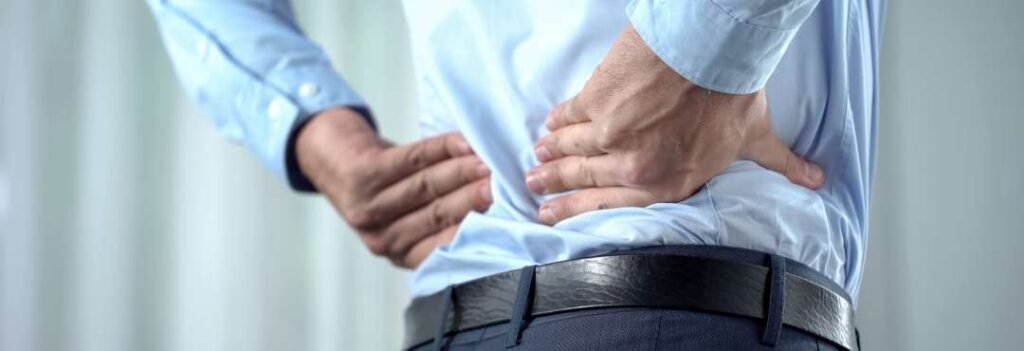What is Slipped Disc
A slip disc, also known as a herniated or prolapsed disc, occurs when the outer layer of a spinal disc (the cushion-like structure between the vertebrae of the spine) becomes damaged or weakened, causing the inner layer to protrude through the outer layer. This can put pressure on nearby nerves, leading to pain, numbness, and weakness in the affected area.
Slip discs most commonly occur in the lower back (lumbar spine) and the neck (cervical spine), but they can also occur in the upper back (thoracic spine). The symptoms of a slipped disc depend on its location and the severity of the damage but can include back or neck pain, muscle weakness, tingling or numbness, and difficulty moving.
Treatment for a slipped disc can include rest, pain management, physical therapy, and in some cases, surgery. The appropriate course of treatment depends on the severity of the slipped disc and the individual patient’s symptoms and medical history.
Symptoms of a Slipped disc
You can have a slipped disc in any part of your spine, from your neck to your lower back. The lower back is one of the more common areas for slipped discs. Your spinal column is an intricate network of nerves and blood vessels. A slipped disc can place extra pressure on the nerves and muscles around it.
Symptoms of a prolapsed disc include:
- pain and numbness, most commonly on one side of the body
- pain that extends to your arms or legs
- pain that worsens at night or with certain movements
- pain that worsens after standing or sitting
- pain when walking short distances
- unexplained muscle weakness
- tingling, aching, or burning sensations in the affected area
Slipped disc Treatment by Dr. Hitesh Kamble
Name: Adiyogi Cup Clinic
Doctor: Dr. Hitesh Kamble

